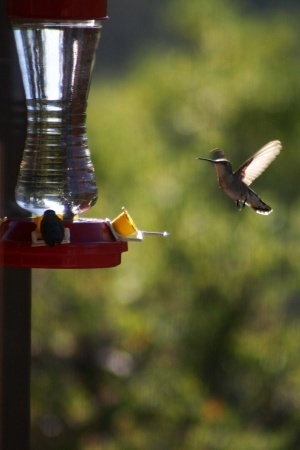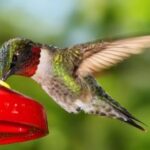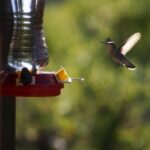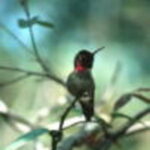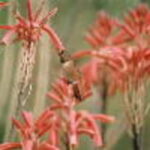Hummingbirds in New Jersey may not be something that is heard very often, mainly because the numbers of hummingbird species is not real large, there are only two species that visit this state. These two species are the Ruby-throated Hummingbird and the Rufous Hummingbird. With the numbers of hummingbirds returning each year to New Jersey not being as large as other states, it becomes important for hummingbird enthusiasts to provide an environment that will attract them and provide the needed nourishment that they desire to continue with their migration.
During the month of April, the hummingbirds begin returning to New Jersey. They can show up as early as the 4th or as late as the 28th, each year varies as to when the first hummingbird will be seen. The average date for them to return is between the 19th and the 23rd of April. Usually just in time for the blooming of the Flowering Quince, the Crabapple, the Apple, the Blueberry, the Azalea, the Autumn Olive, the Black Locust and the Tulip Tree. Hummingbirds may also thrive on the sap supplied from trees and shrubs that have been drilled by yellow-bellied sapsuckers, especially if a late cold front happens to wander through the area, thus delaying the blooming of the plants that they prefer.
Even though hummingbirds in New Jersey will almost totally ignore the feeders that have been carefully supplied and maintained when their favorite plants are blooming, it is still important to have them ready in case the blooms end, or the hummingbird population gets to large for the hummingbird garden to handle it. Hummingbird enthusiasts maintain their hummingbird gardens and feeders with this in mind and have the foresight to ensure that their hummingbird gardens are in bloom the entire season that the hummingbirds are visiting. This can be accomplished by including plants in the garden that bloom at different times of the year, such as Japanese Honeysuckle, which blooms from about May 25 to June 15.
While hummingbirds may actually prefer the nectar provided by the blooming flowers in a hummingbird garden, identifying these hummers may not be as simple as when they are feeding on a hummingbird feeder. The good news is that with only two species of hummingbirds in New Jersey, the task of identification of each bird is not as difficult as it would be if there were many species, some of which have similar features. Identifying the Ruby-throated Hummingbird and the Rufous Hummingbird is easier with the males of the species, because they both have very colorful, bright feathers that cover their body, but the feathers that cover their throats really stand out and make it easy to identify which bird is which. The Ruby-throated Hummingbird has, of course, a ruby red throat, but the Rufous Hummingbird does not get its name from the color of its throat, which is orange-red, not rufous. However, the male Rufous Hummingbird does have rufous colored feathers covering its crown, tail and sides. The females of these species are not as colorful as the males, but they can be identified just as well. The female Ruby-throated Hummingbird is best identified by its white breast; where as the female Rufous Hummingbird has a streaked breast.
